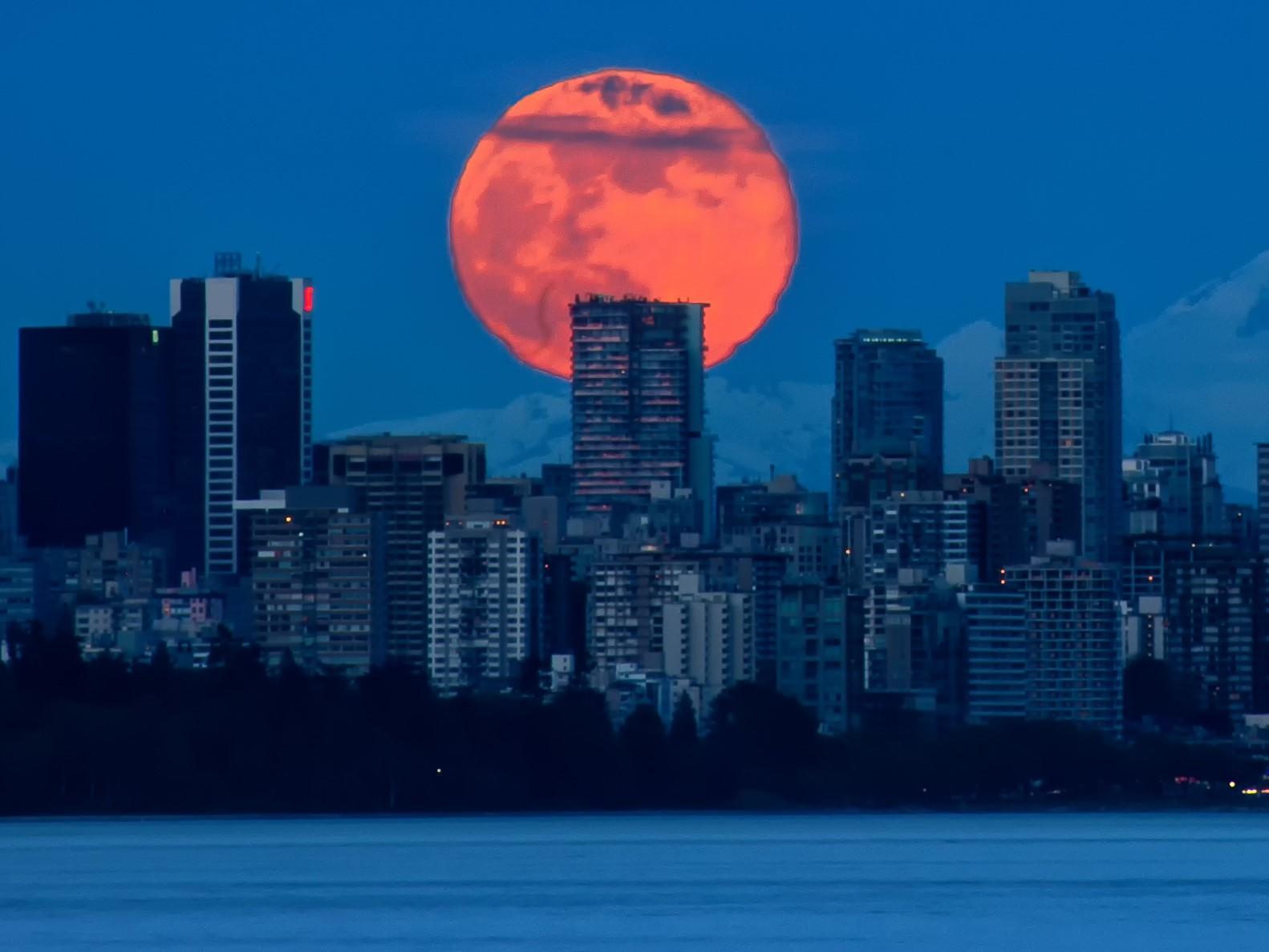This website uses cookies so that we can provide you with the best user experience possible. Cookie information is stored in your browser and performs functions such as recognising you when you return to our website and helping our team to understand which sections of the website you find most interesting and useful.

This week's full moon will be the final supermoon of 2020, whereby it appears bigger and brighter than usual in the night's sky.
The rare spectacle takes place when the moon is near to its closest point in its orbit, with May's full moon passing at 361,184km from Earth.
May's moon is traditionally known as the "flower moon", as it coincides with spring blossoms in the northern hemisphere.
Clear skies and unusually low air pollution resulting from the coronavirus lockdown makes it a good opportunity for sky gazers in the UK to witness the celestial event.
The best time to see it will be after sunset on Thursday evening, when the moon will rise in the south-east at around 8.44pm in the UK.
"Technically the exact moment of full moon is 11.45am, however the moon will not be visible in the sky in the UK at that time," said Greg Brown, an astronomer at the Royal Observatory.
"Times for moonrise and set vary slightly across the UK, but not by more than about 10 minutes or so."
Created with Sketch.
Created with Sketch.
1/20 London
Getty
2/20 County Laois, Ireland
PA
3/20 Skopje, North Macedonia
EPA
4/20 Cambridgeshire
PA
5/20 New York
Reuters
6/20 Notre Dame, Paris
Reuters
7/20 Golden Gate Bridge, San Francisco
Reuters
8/20 Milton Keynes
Reuters
9/20 Chilterns
Reuters
10/20 St Louis, Missouri
AP
11/20 The Shard, London
Reuters
12/20 Edinburgh
PA
13/20 Golden Gate Bridge, San Francisco
Reuters
14/20 Dolomites mountain range
EPA
15/20 Worthing
Getty
16/20 London
PA
17/20 Windsor
PA
18/20 Dublin
PA
19/20 Falkirk
PA
20/20 Sunderland
PA
1/20 London
Getty
2/20 County Laois, Ireland
PA
3/20 Skopje, North Macedonia
EPA
4/20 Cambridgeshire
PA
5/20 New York
Reuters
6/20 Notre Dame, Paris
Reuters
7/20 Golden Gate Bridge, San Francisco
Reuters
8/20 Milton Keynes
Reuters
9/20 Chilterns
Reuters
10/20 St Louis, Missouri
AP
11/20 The Shard, London
Reuters
12/20 Edinburgh
PA
13/20 Golden Gate Bridge, San Francisco
Reuters
14/20 Dolomites mountain range
EPA
15/20 Worthing
Getty
16/20 London
PA
17/20 Windsor
PA
18/20 Dublin
PA
19/20 Falkirk
PA
20/20 Sunderland
PA
An effect called the "Moon Illusion" means that the moon will appear even bigger at moonrise when it is close to the horizon.
This is because the brain is tricked into thinking it is much closer than it actually is, due to its relative size to objects like trees and buildings on the horizon.
It will be the final supermoon until April 2021.



 Africana55 Radio
Africana55 Radio 

